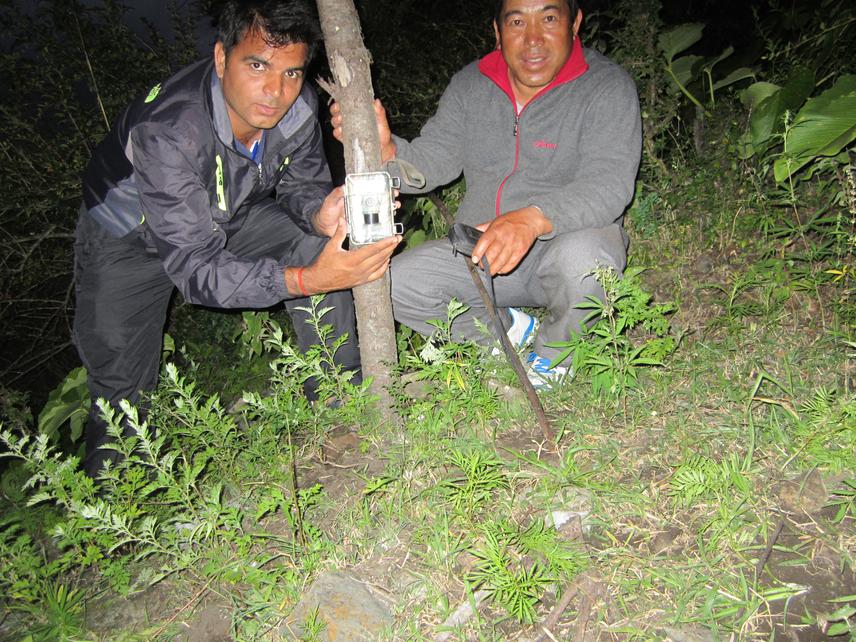Rabin Kadariya
Other projects
2 Jan 2018
Genetics and Community Based Crop Damage Compensation Scheme of Asiatic Black Bears (Ursus thibetanus) in Annapurna Conservation Area of Nepal
The overall aim of the study is to understand ecology and genetics of Asiatic black bears in Annapurna and Manaslu Conservation Areas of Nepal.

Camera trap for the monitoring of bear movements.
Habitat use of Asiatic black bear is altering due to climate change, repeated fire, habitat fragmentation and other anthropogenic causes resulting into threats like genetic drift, behavioral changes and frequent conflicts with local people. Crop and livestock depredation and humans attack are main conflict issues related to Asiatic black bears (Charoo et al. 2009), triggering retaliatory killings of bears through traps, poisoning and shooting by guns. Bears face considerable stress from habitat loss and poaching (Sathyakumar 1998) and affected by climate change in recent years. The consistent population decline over the years has led the IUCN to include this species under the globally vulnerable (Garshelis and Steinmetz 2008) status. It is endangered species in Nepal, however, it has never received necessary conservation importance in the mountain landscape of Nepal (Jnawali et al. 2011).
Retaliatory killing, poaching, climate change and habitat degradation have led to dwindling and scattered bear populations, however, limited information on its ecology, conflict and no information on population genetic structure is available. High genetic variation is considered crucial for a population to better adapt the changing environment. Genetic variation is reduced in small breeding population due to inbreeding and genetic drift that impede the adaptability of population to new environment (Frankham and Ralls 1998). This situation is true in spatially isolated small bear population in Nepal. It may lead to extirpation of certain populations if timely conservation measures are not undertaken.
This research aims to prepare baseline information on bears status, distribution, habitat use, seasonal diet, genetic phylogeny and human-bear conflict using non-invasive method. The proposed genetic study not only helps to ascertain the sub species of Asiatic black bear but also gives ample information on bear biology, population size estimation, genetic variability and evolution history of bear population in Nepal. Further, an understanding of the food habit, feeding patterns and periodicity of food production in the wild will generate useful information for a strategic reduction of human-bear conflict cases with the conflict scenario in the adjoining settlements. Such scientific information on bears will help better understanding of the species among the policy makers in the government of Nepal, media, academia, researcher and civil society for the awareness about bear conservation and development of robust Asiatic black bear conservation action plan for Nepal.